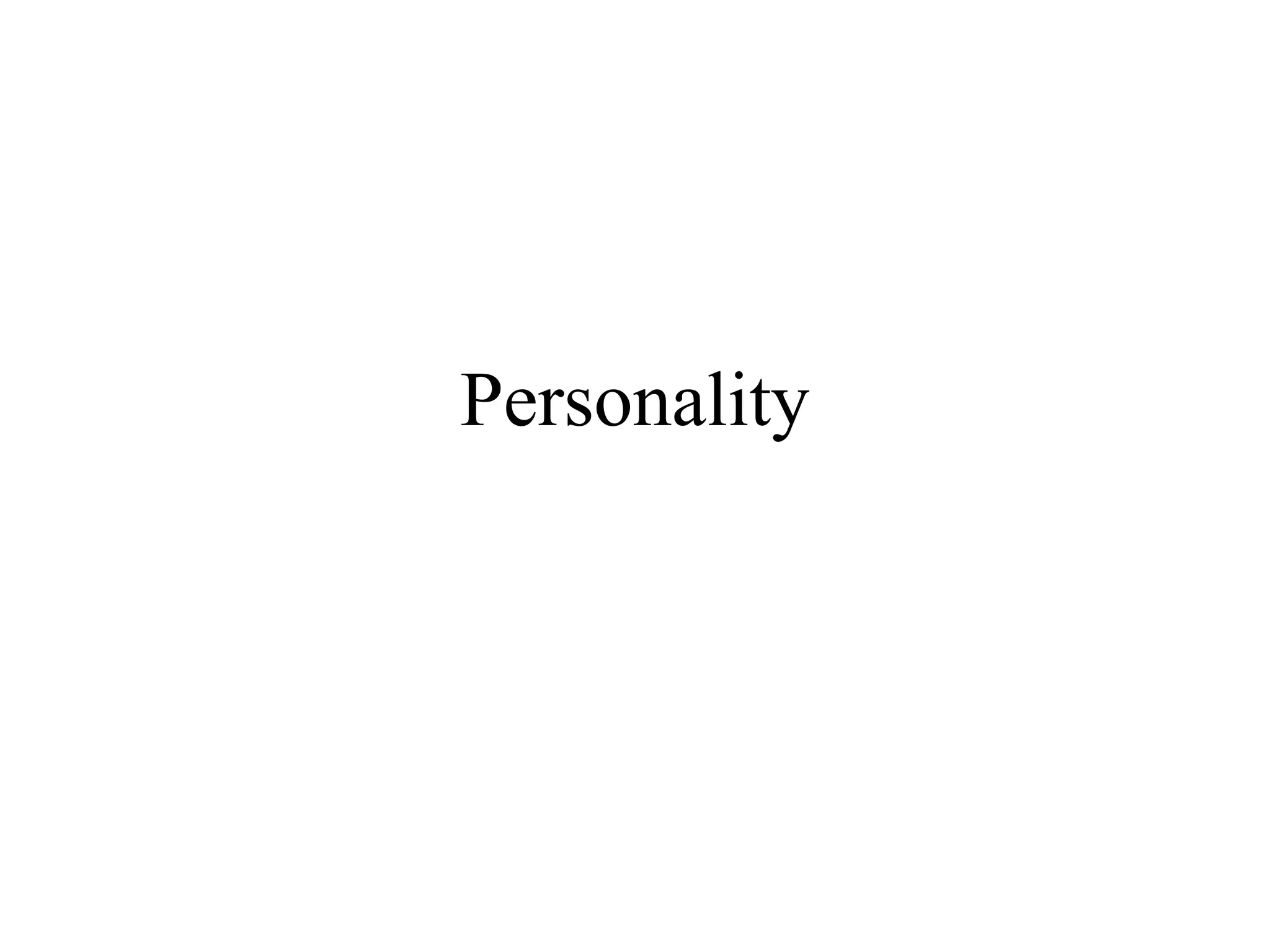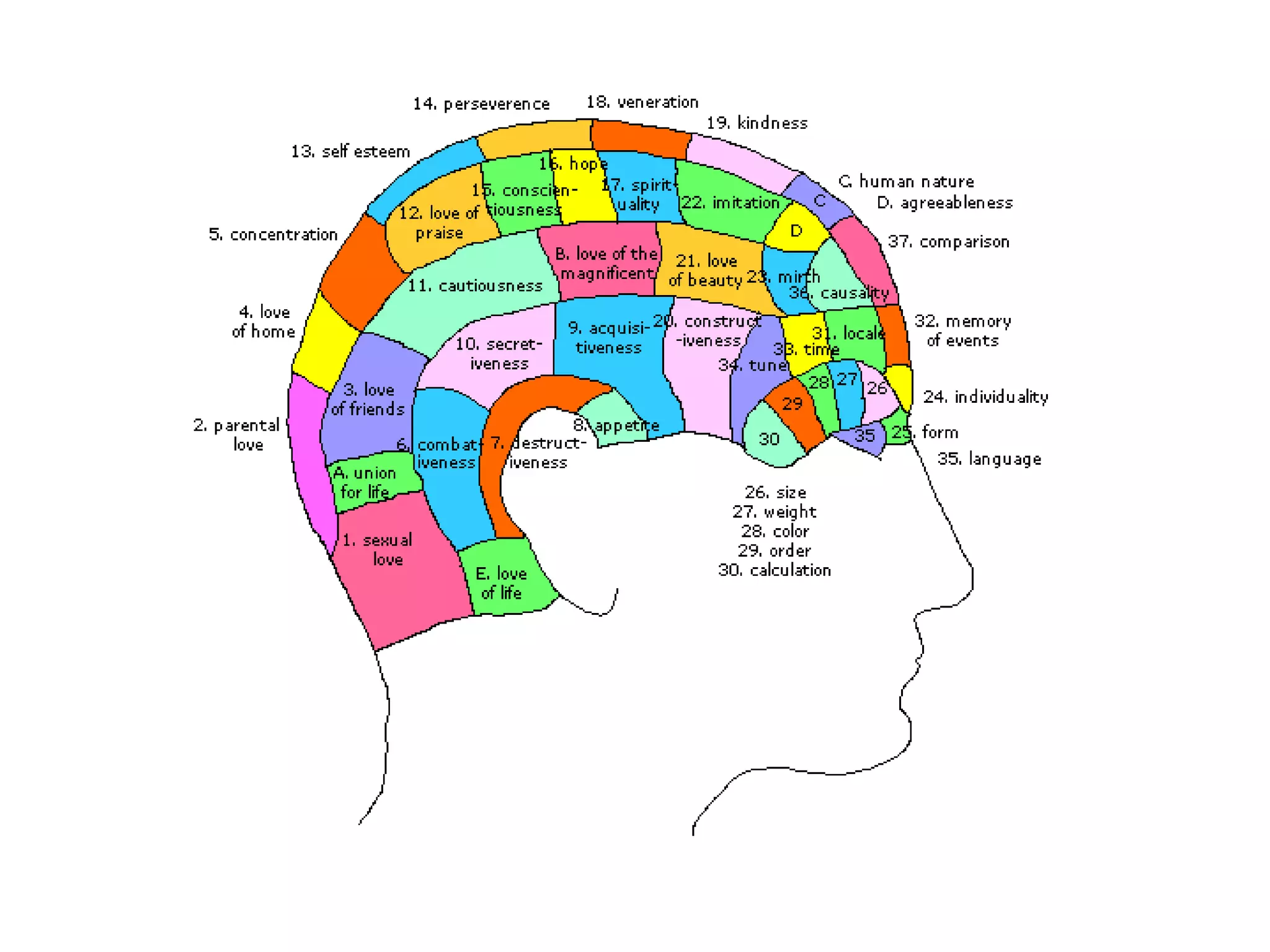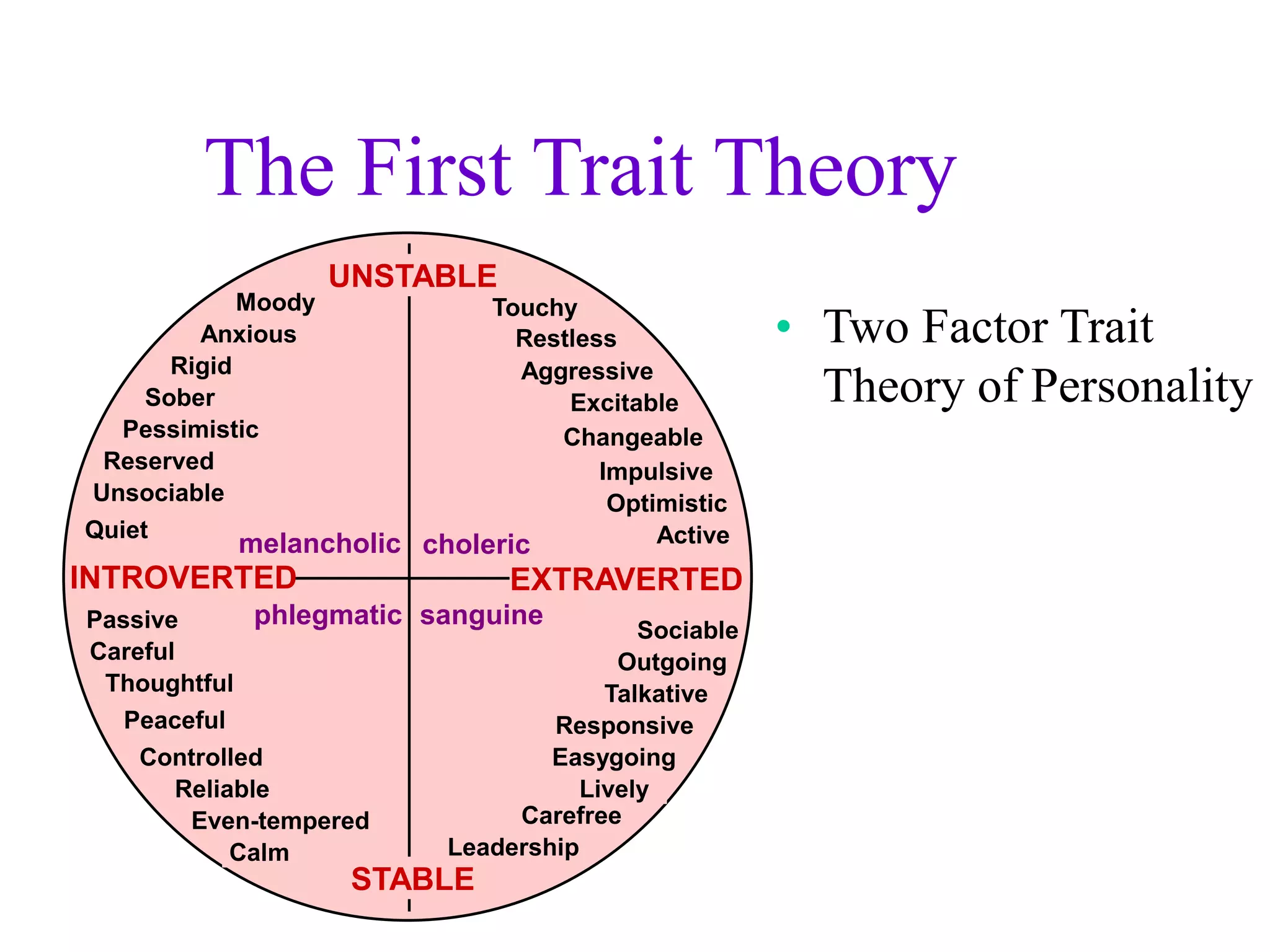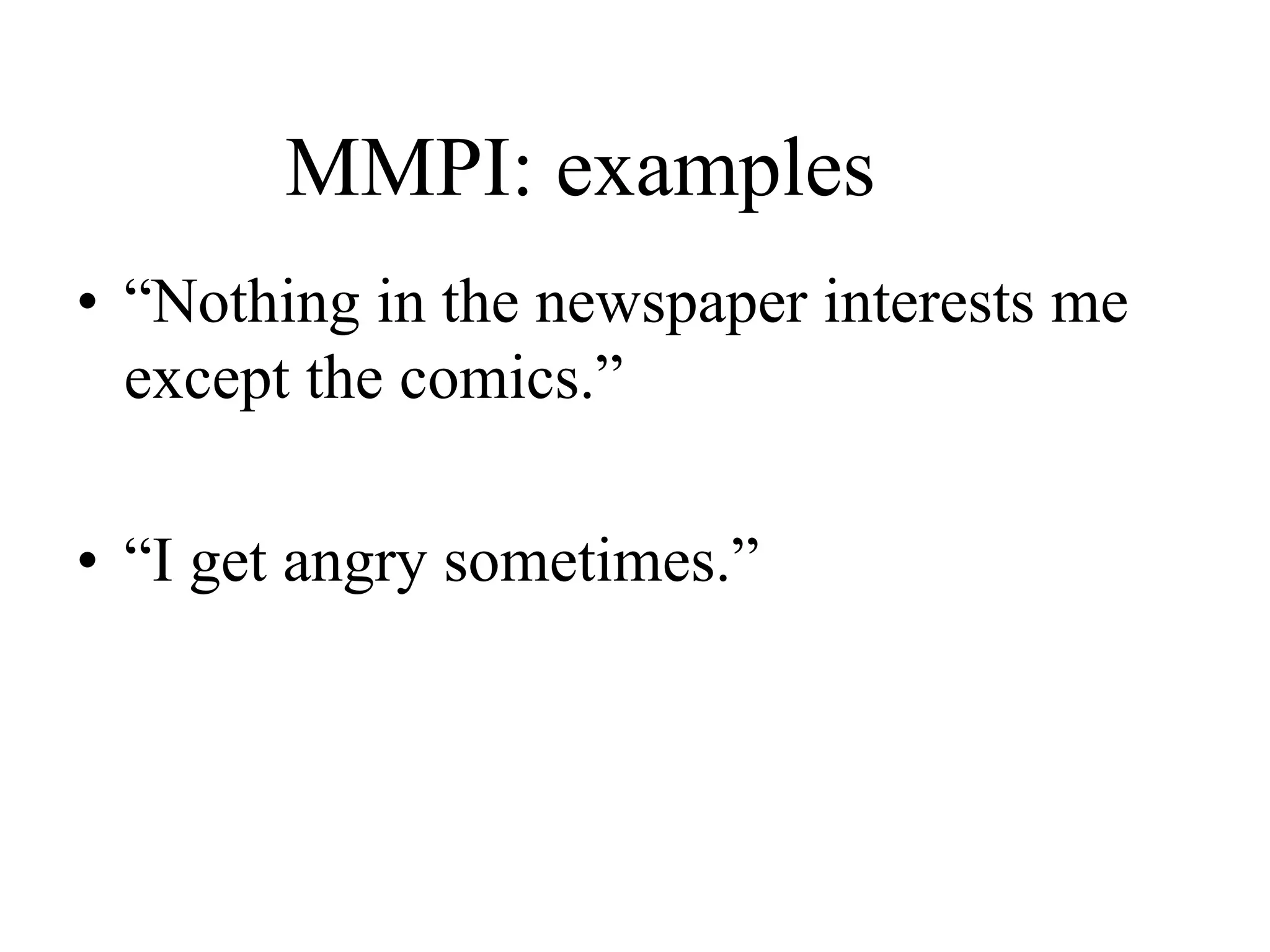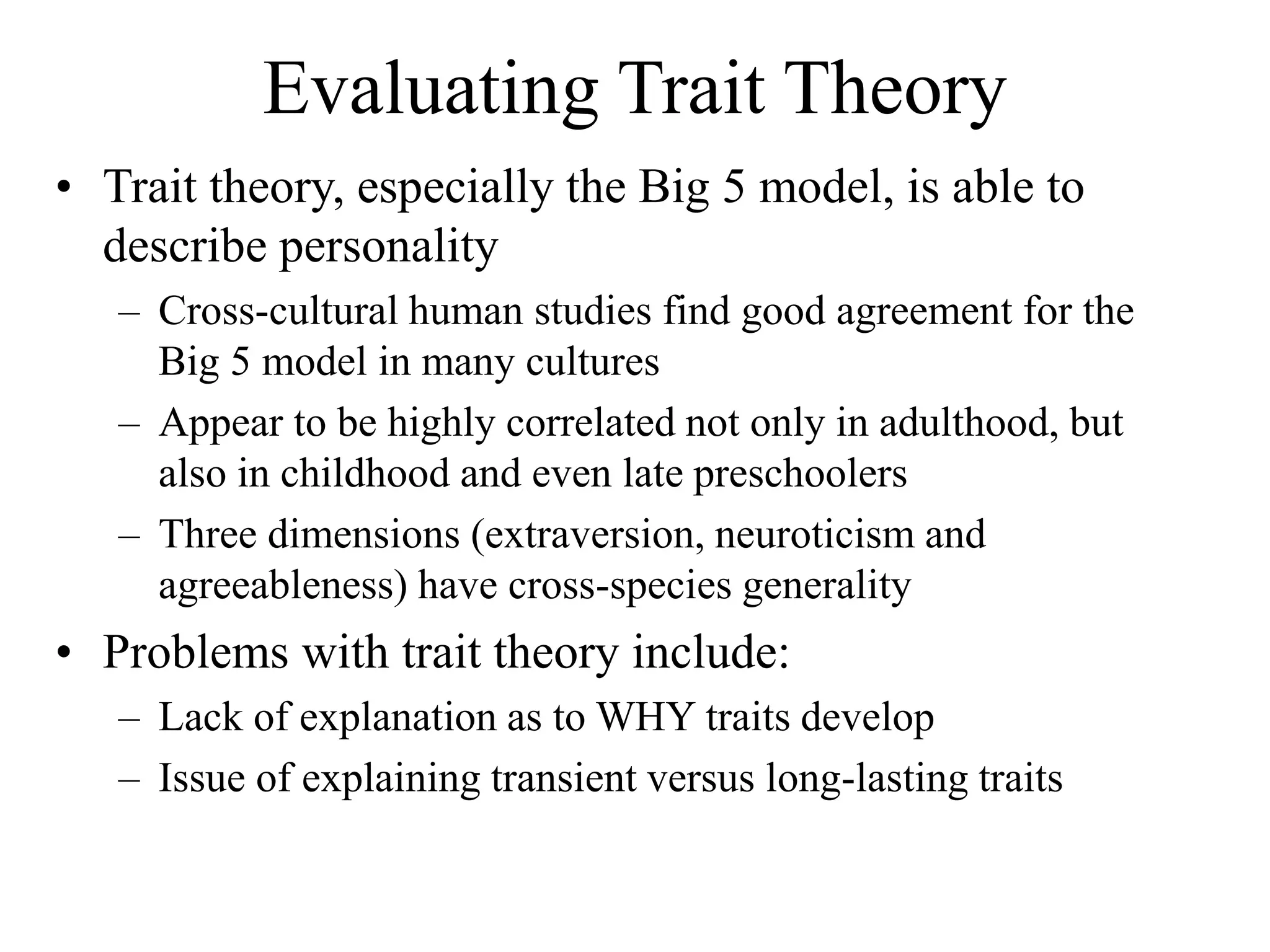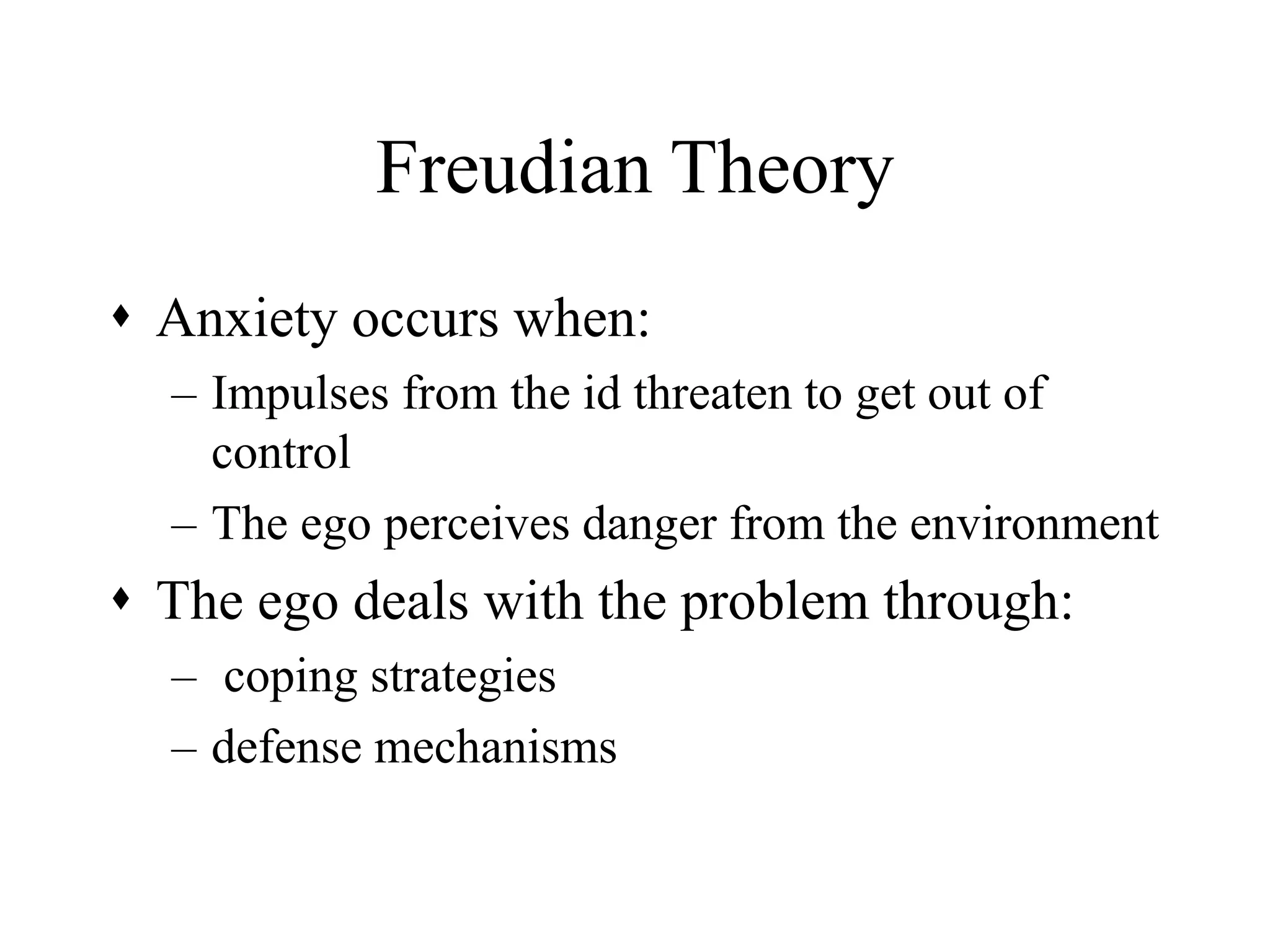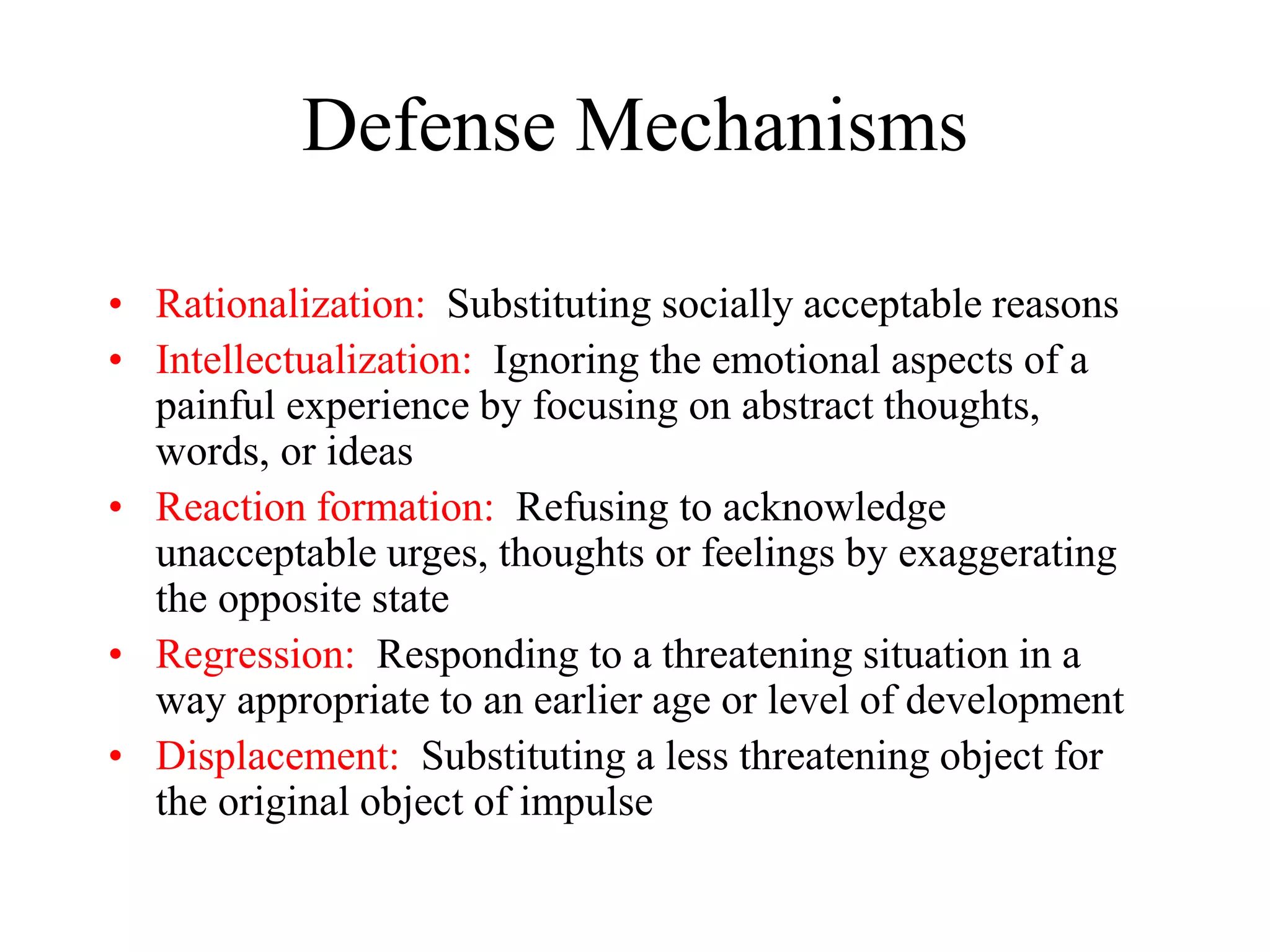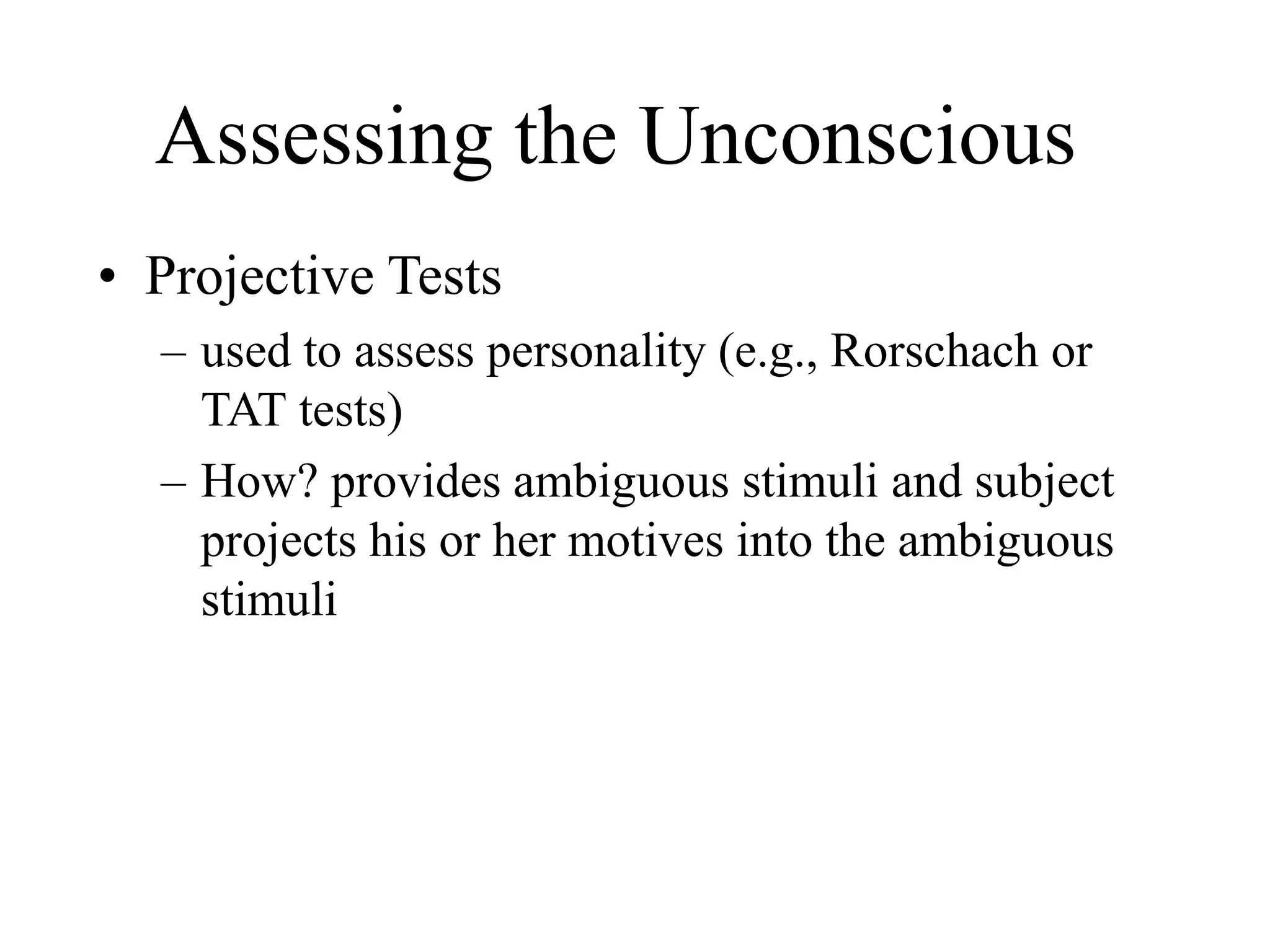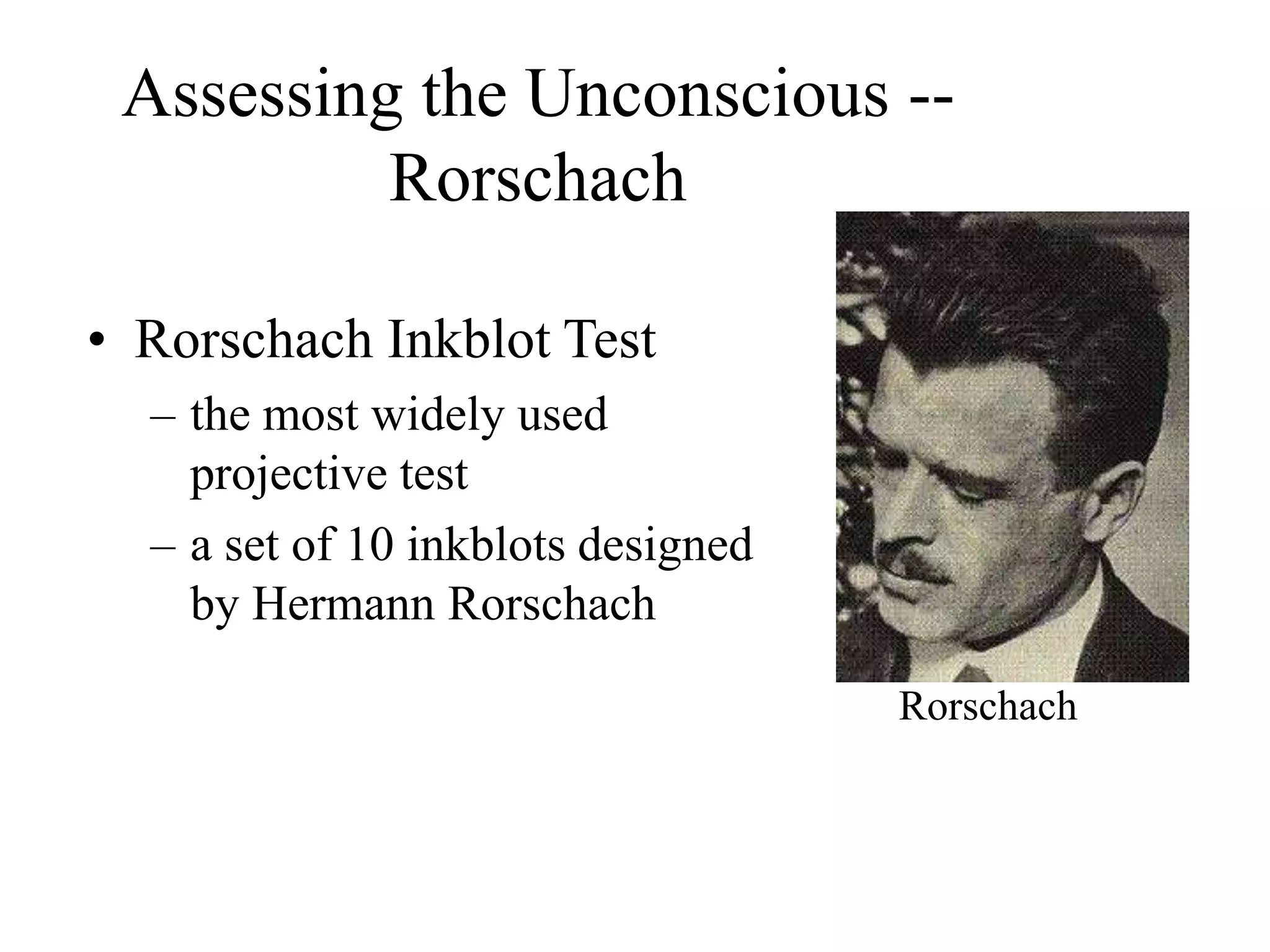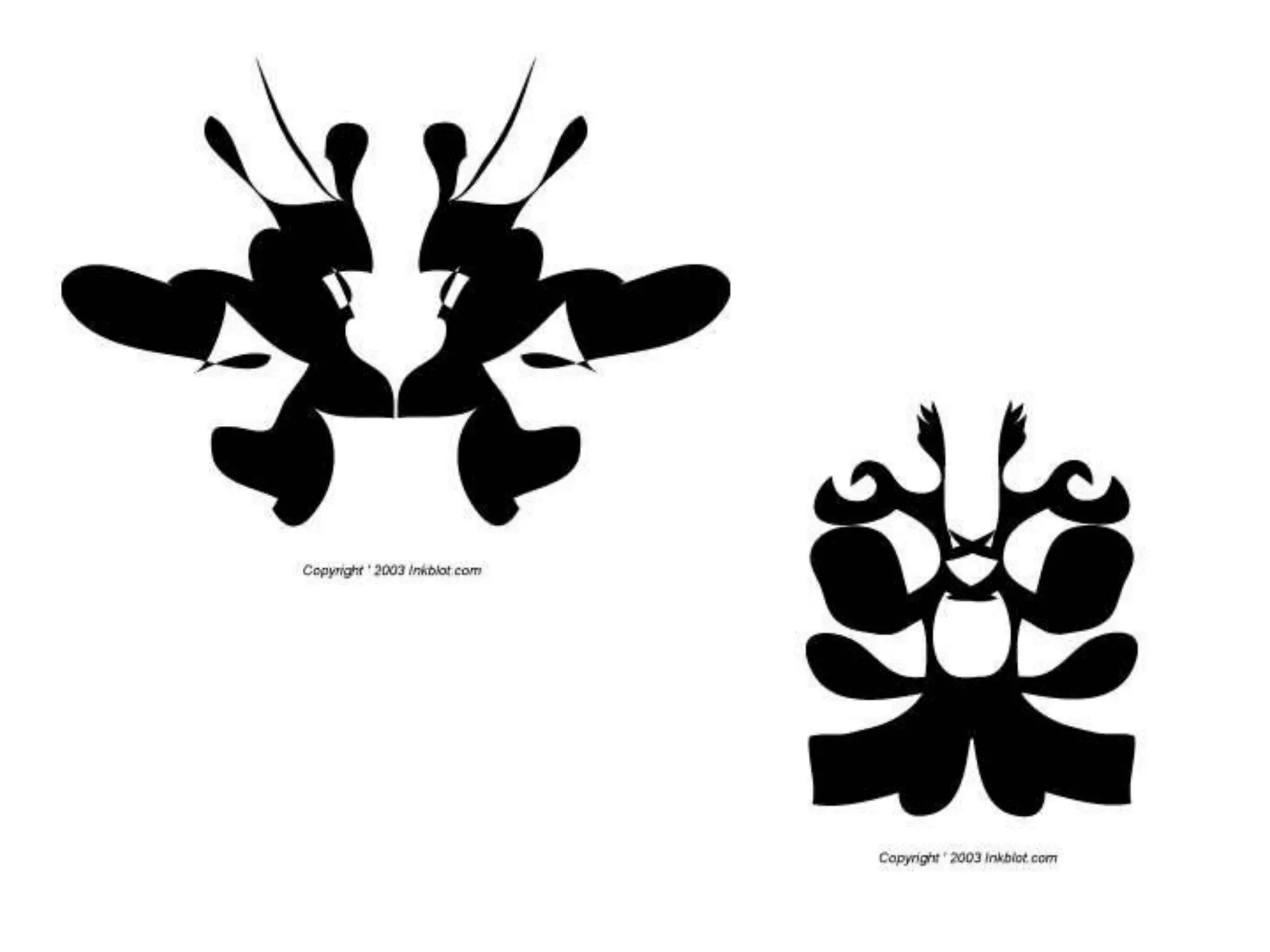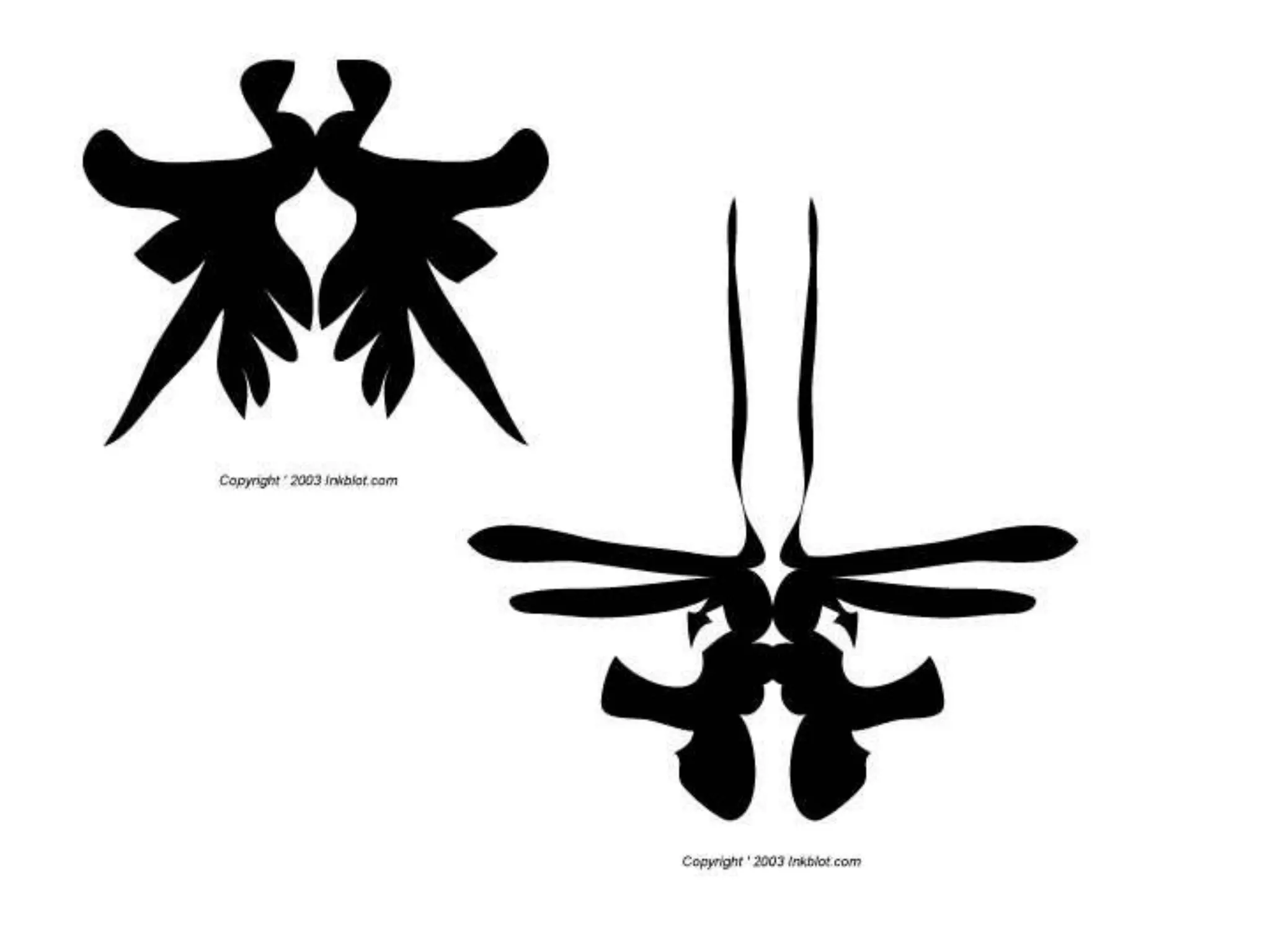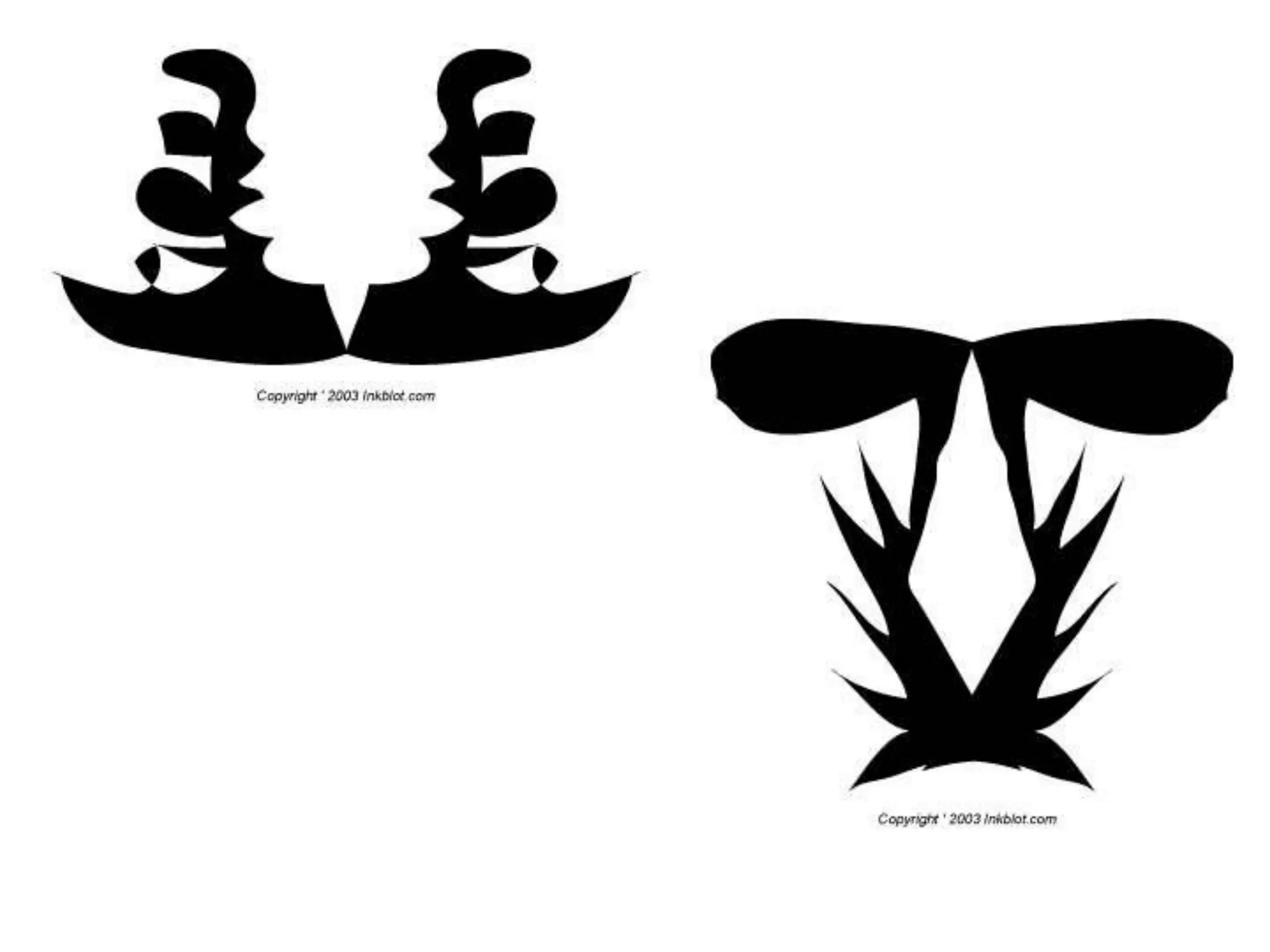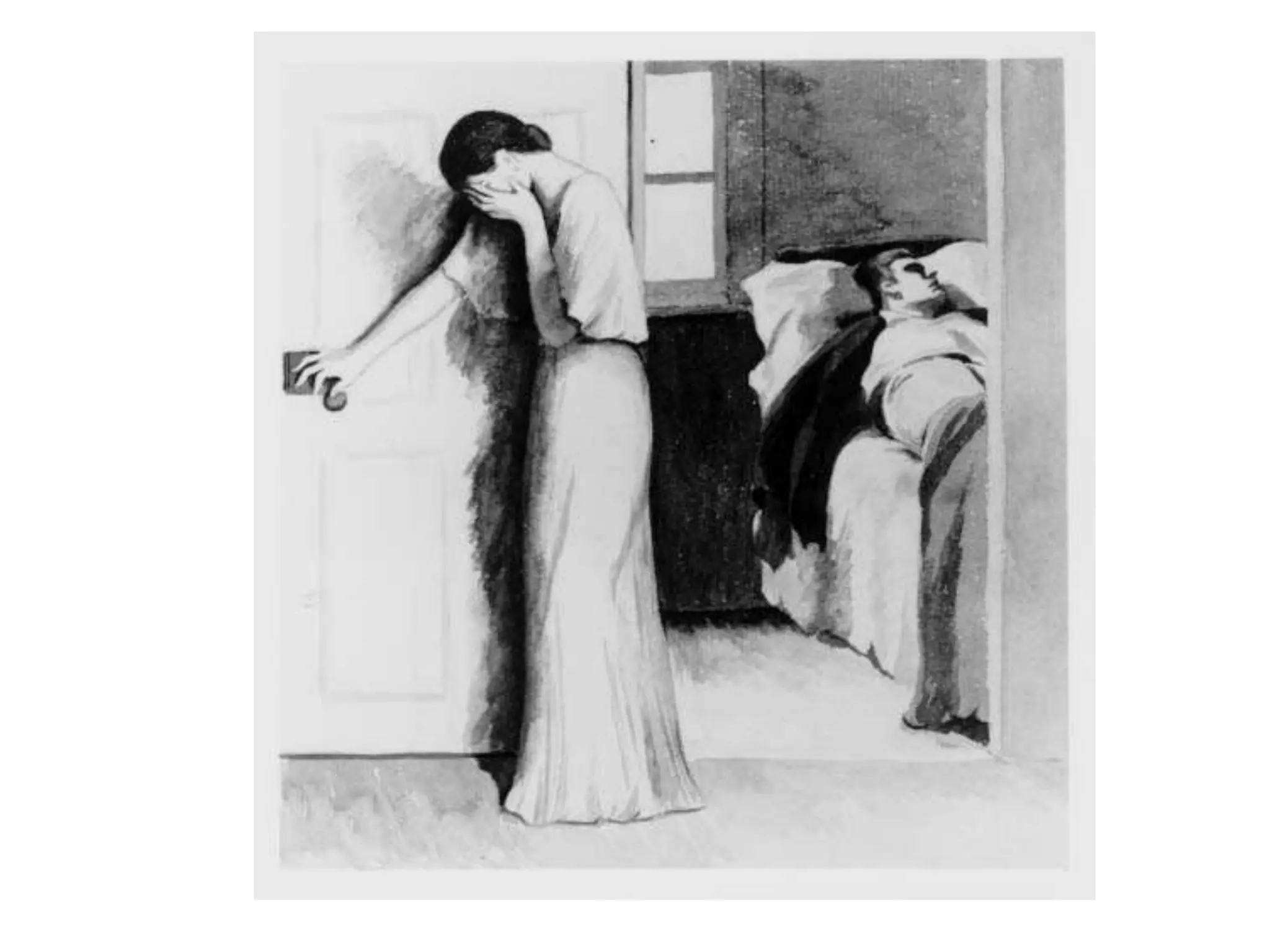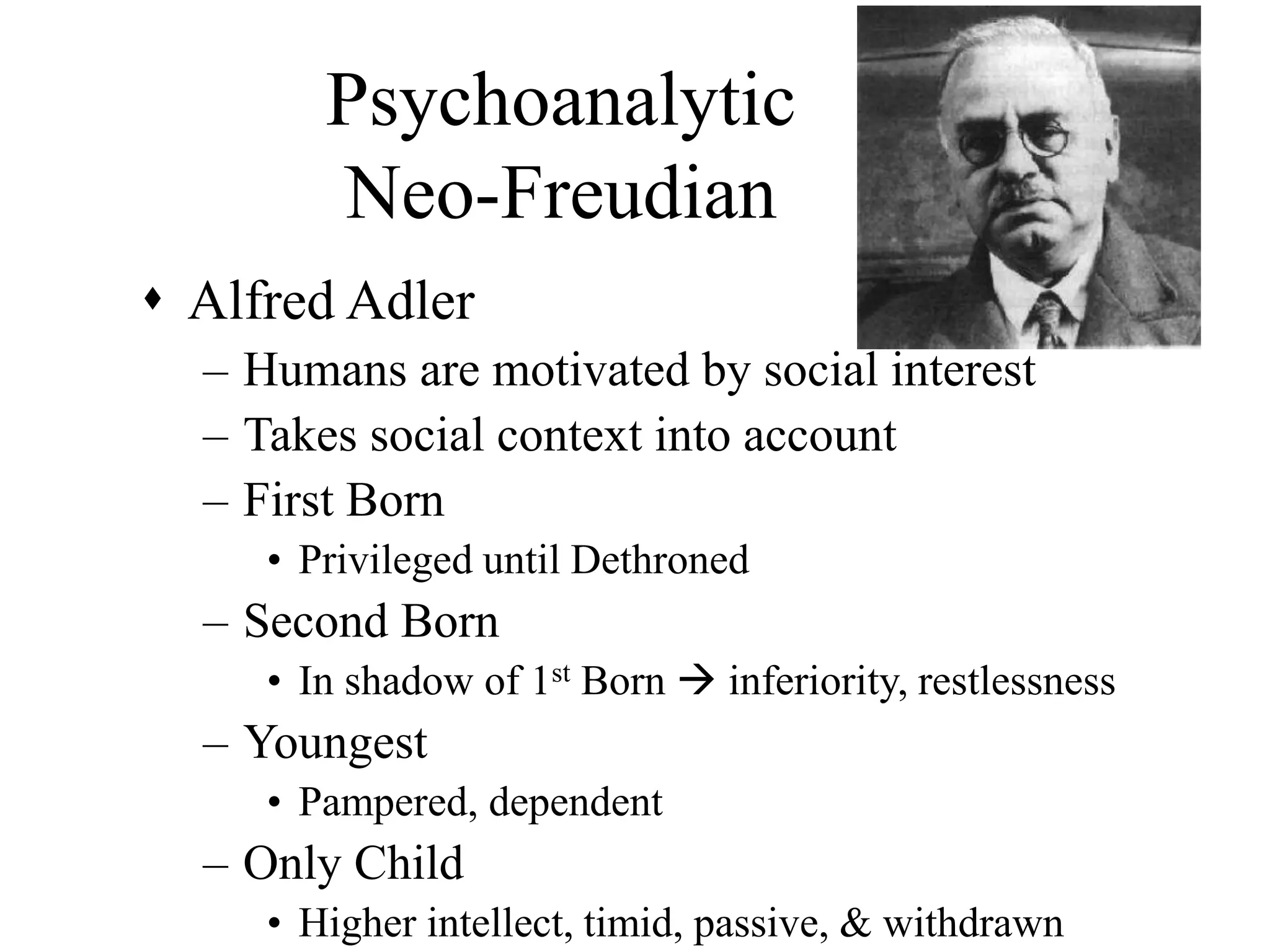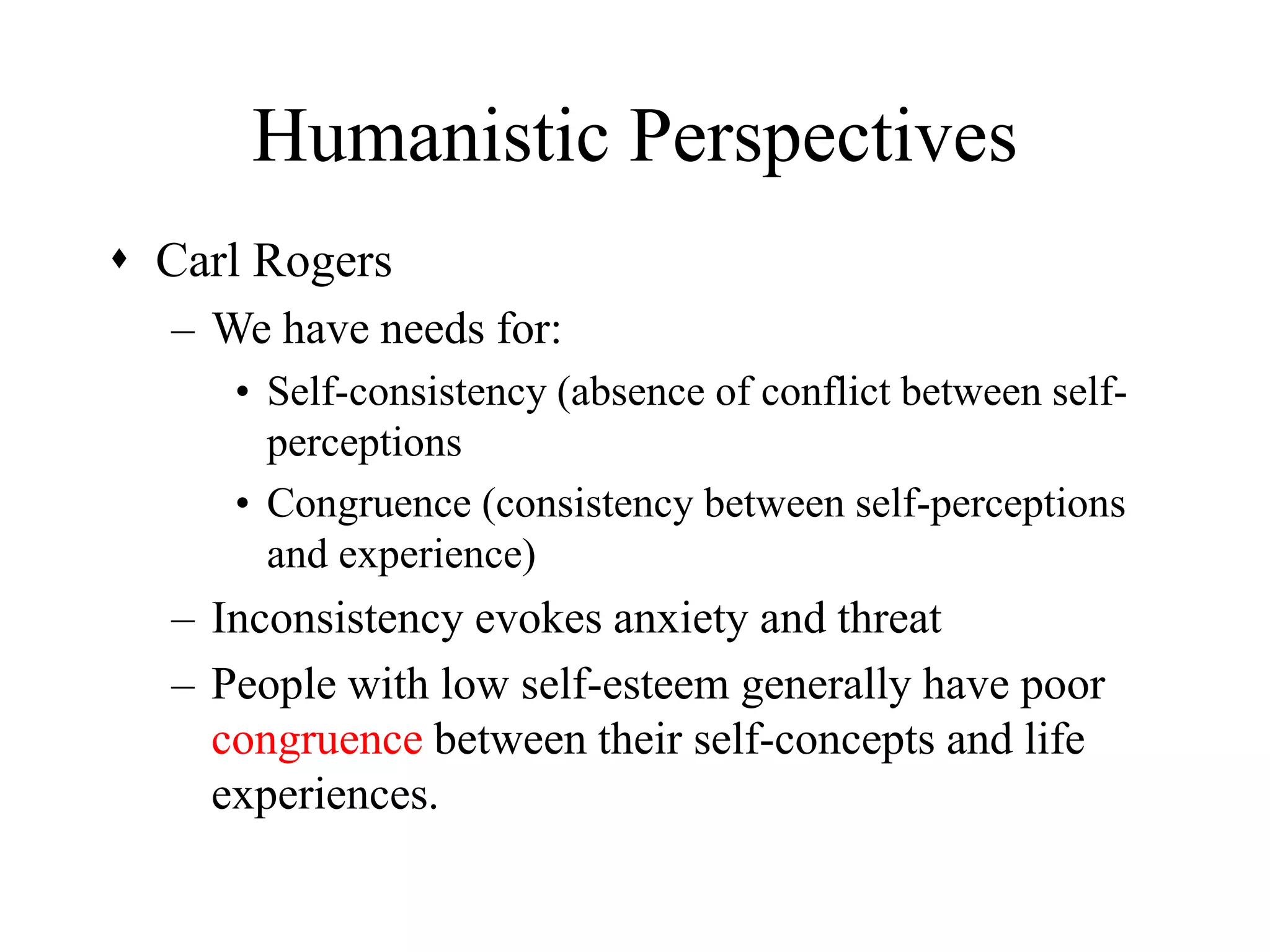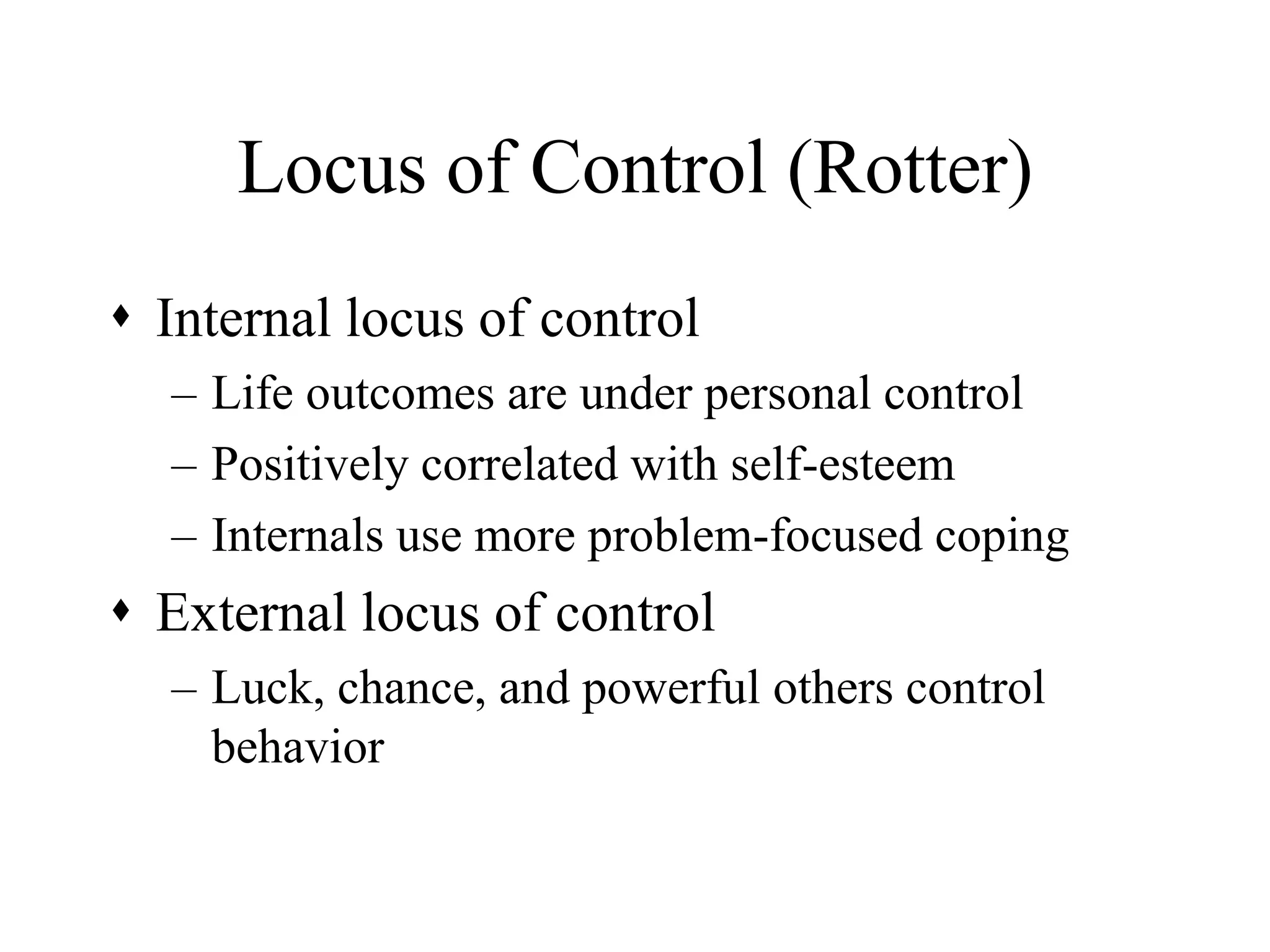This document provides an overview of several theories of personality:
1. Trait theory proposes that personality can be described based on traits like extraversion and neuroticism. The "Big Five" model identifies five core traits.
2. Psychoanalytic theory views personality as formed by unconscious desires and defenses against anxiety. Freud proposed structures like the id, ego and superego. Defense mechanisms like repression and rationalization protect the conscious mind.
3. Humanistic theory sees people as inherently good and striving for self-actualization. Theorists like Rogers and Maslow emphasized congruence between self-concept and experience.
4. Social-cognitive theory proposes that personality arises from our unique experiences and
